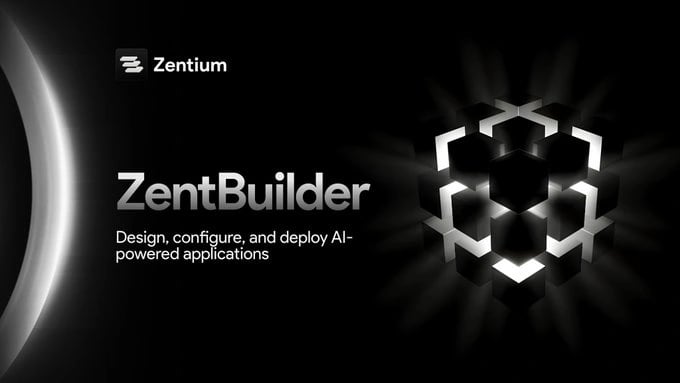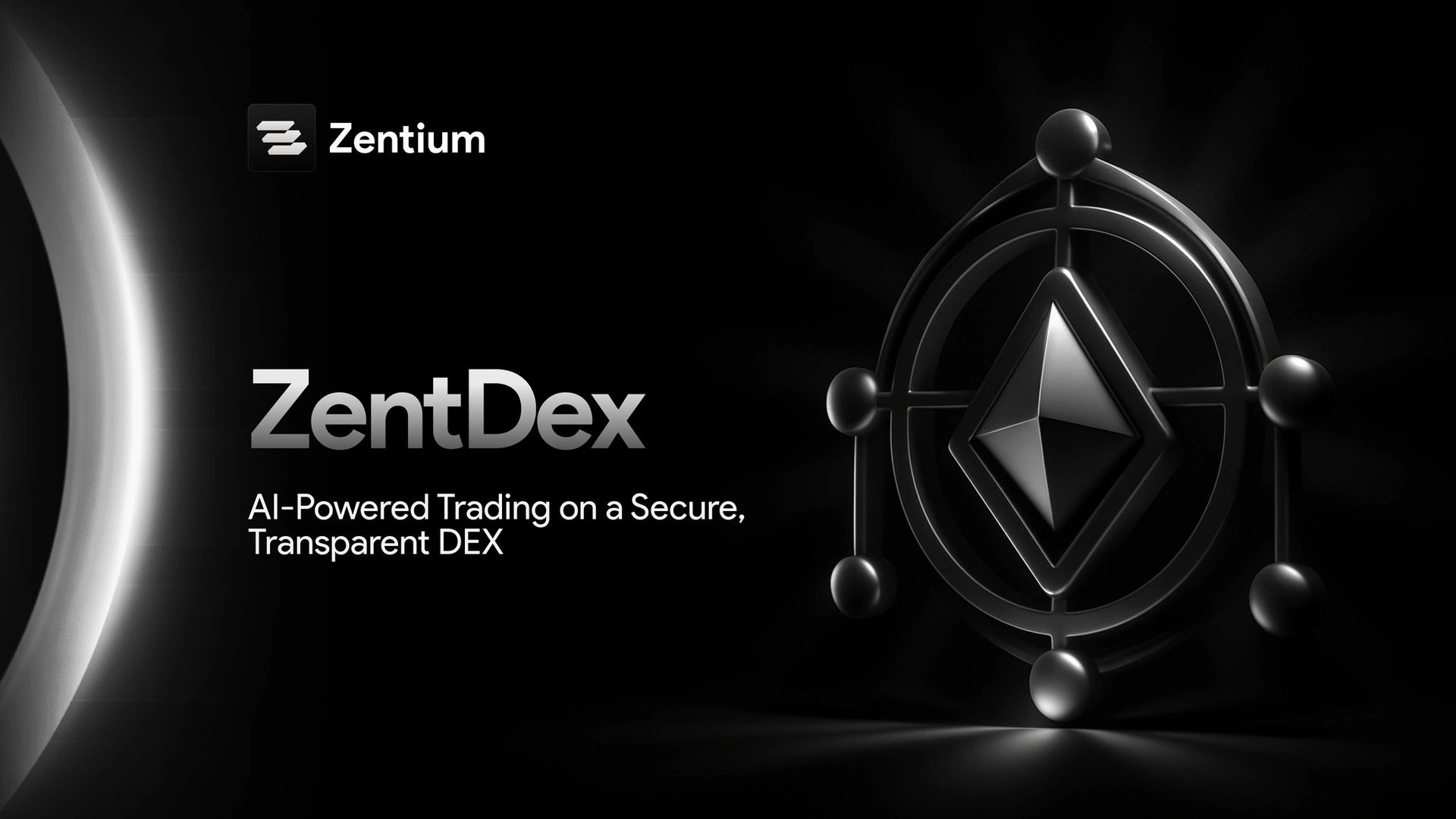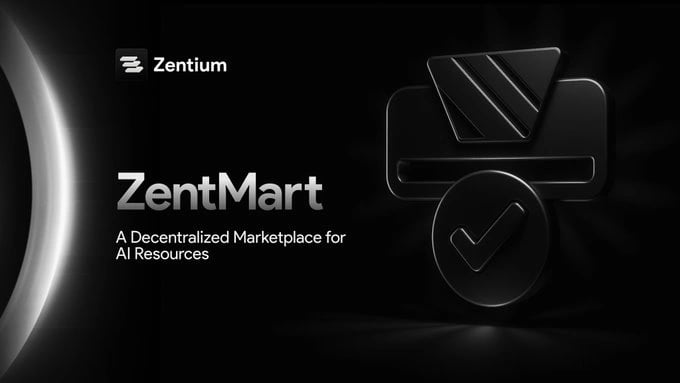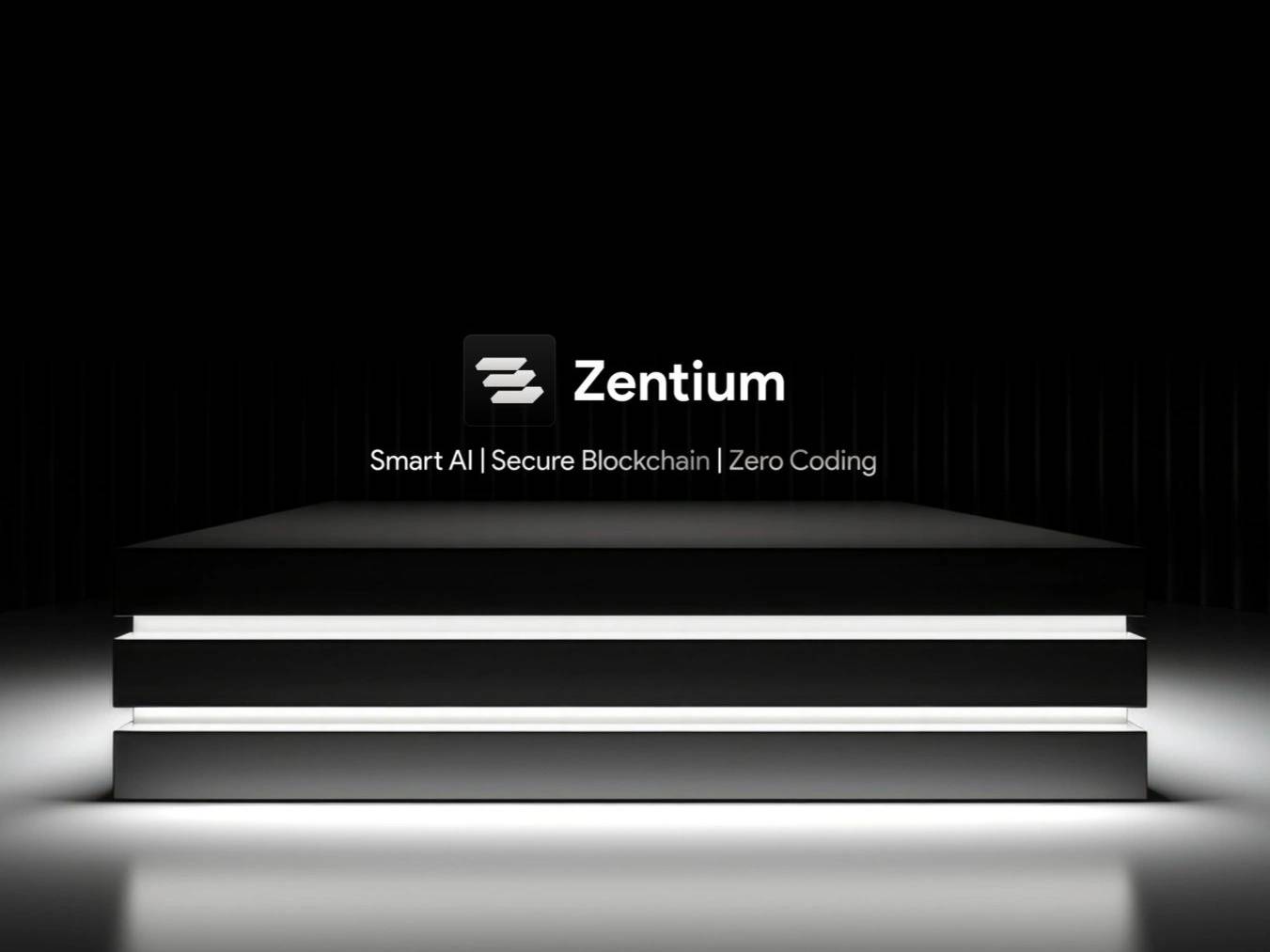위키 구독하기
Share wiki
Bookmark
Zentium
Zentium
Zentium(젠티움)은 AI 기반의 블록체인 플랫폼으로, 광범위한 코딩 지식 없이도 AI 에이전트 및 애플리케이션의 배포를 용이하게 하도록 설계되었습니다. 블록체인 운영, 스마트 계약, 및 탈중앙화 애플리케이션에 인공 지능 기능을 직접 통합하는 것을 목표로 합니다. [1]
개요
젠티움(Zentium)은 다양한 배경의 사용자를 위해 AI 에이전트(AI agents)와 스마트 계약(smart contracts)의 노코드 배포를 가능하게 하도록 설계된 AI 기반 블록체인 플랫폼입니다. 그 스마트 계약은 AI를 통합하여 실시간 데이터를 분석하고, 행동을 조정하며, 거래, 보안, 거버넌스와 같은 분야의 프로세스를 자동화합니다. 이 플랫폼은 변화하는 상황을 지속적으로 모니터링하고 대응하는 자율적인 AI 에이전트를 특징으로 하여 효율성과 보안을 향상시킵니다. 젠티움은 또한 사용자 간에 처리 능력을 분산하여 데이터 프라이버시와 투명성을 유지하는 분산형 AI 컴퓨팅 네트워크인 ZentCloud를 운영합니다. 그 보상 시스템인 Proof-of-Intelligence (PoI)는 원시 컴퓨팅 성능이 아닌 AI 기여의 가치에 따라 참여자에게 보상합니다. 또한 젠티움은 지능형 DAO를 통해 분산형 거버넌스에 AI를 통합하여 제안 분석 및 투표를 개선하여 보다 정보에 입각하고 탄력적인 의사 결정을 가능하게 합니다. [3]
특징
젠티움 블록체인
젠티움 블록체인은 인공지능을 탈중앙화 애플리케이션과 통합하는 플랫폼으로, 확장성, 보안성 및 접근성에 중점을 둡니다. AI 기반의 스마트 계약은 실시간 데이터, 머신러닝 및 예측 분석을 기반으로 동적으로 조정되어 효율성을 높이고 응답을 자동화합니다. 이 플랫폼은 추가적인 복잡성 없이 애플리케이션 개발을 간소화하기 위해 API, SDK 및 명령줄 인터페이스를 포함한 개발 도구를 제공합니다. 안전하고 확장 가능한 인프라의 지원을 받는 젠티움은 AI 자동화, 탈중앙화 금융 및 엔터프라이즈 솔루션을 포함한 다양한 사용 사례를 수용합니다. 이 네트워크는 $ZENT 토큰을 사용하여 트랜잭션을 용이하게 하고 탈중앙화 운영을 보장합니다. [4]
ZentBuilder

ZentBuilder는 코딩 없이 Zentium에서 AI 에이전트(AI agents)와 스마트 계약(smart contracts)을 생성, 구성 및 배포할 수 있는 노코드 플랫폼입니다. 드래그 앤 드롭 인터페이스를 통해 자동화, 데이터 분석 및 자연어 처리를 담당하는 AI 로직 블록을 조립할 수 있습니다. 이 플랫폼은 직관적인 배포 인터페이스를 제공하여 디자인에서 실행으로의 원활한 전환을 지원하며, AI 동작, 머신러닝 알고리즘 및 스마트 계약(smart contracts)과의 상호 작용을 사용자 지정할 수 있습니다. 사전 구축된 스마트 계약(smart contract) 템플릿은 DeFi(DeFi) 자동화 및 NFT(NFT) 민팅(minting)과 같은 사용 사례를 지원하여 개발 시간과 비용을 절감합니다. 사용자는 실행 매개변수를 설정하고, 권한을 정의하고, 데이터 개인 정보를 제어할 수 있습니다. AI 에이전트(AI agents)는 테스트넷(TestNet)에서 배포 전에 테스트할 수 있으며, 메인넷(MainNet)에서는 실시간 데이터로 작동하고 온체인 리소스와 직접 상호 작용합니다. ZentBuilder는 개발자와 비개발자 모두에게 액세스 가능한 통합된 워크플로우로 AI 기반 애플리케이션 개발을 간소화합니다. [5]
ZentDex

ZentDex는 중개자 없이 안전하고 투명한 온체인 거래를 가능하게 하는 Zentium 생태계 내의 탈중앙화 거래소입니다 (decentralized exchange). 여러 탈중앙화 거래소 (decentralized exchanges)에서 유동성을 확보하는 DEX (DEX) 애그리게이터를 통합하여 거래 가격을 최적화하고 슬리피지 (slippage)를 줄이며 실행을 개선합니다. 또한, 실시간 시장 데이터를 분석하여 보다 정확하고 정확한 거래 결정을 지원하는 AI 기반 거래 전략을 통합합니다. 이러한 조합은 거래 효율성을 높이고 사용자에게 경쟁력 있는 가격과 더 큰 제어권을 제공하는 것을 목표로 합니다. [6]
ZentMart

ZentMart는 개발자, 연구원, 기업 간의 AI 모델, 데이터 세트 및 전문 서비스 교환을 용이하게 하는 Zentium 내의 분산형 마켓플레이스입니다. 크리에이터가 판매, 임대 또는 라이선스를 통해 AI 리소스를 수익화할 수 있도록 하여 고급 도구에 대한 접근성을 확장합니다. 연구원은 머신 러닝의 발전을 지원하기 위해 데이터 세트를 기여할 수 있으며, 기업은 특정 요구 사항에 맞는 AI 솔루션을 확보할 수 있습니다. 이 플랫폼은 Zentium의 기본 $ZENT 토큰을 사용한 토큰화된 접근을 지원하여 사용자가 안전하고 투명하게 AI 기술 및 데이터를 구매하거나 임대할 수 있도록 합니다. [7]
ZentBridge
ZentBridge는 Zentium을 Ethereum과 Binance Smart Chain을 포함한 주요 블록체인에 연결하는 크로스체인 브리지로, 토큰과 디지털 자산의 원활한 전송을 가능하게 합니다. 네트워크 간의 일반적인 장벽을 제거하여 빠르고 효율적인 자산 이동을 보장하며, 트레이더, 개발자 및 기업이 탈중앙화 금융에 접근하고, 크로스체인 거래를 실행하고, 자산을 통합할 수 있도록 지원합니다. 여러 블록체인 생태계 간의 상호 운용성을 가능하게 함으로써, ZentBridge는 사용자와 프로젝트가 단일 체인에 국한되지 않고 다양한 플랫폼에서 유연하게 운영할 수 있도록 합니다. [8]
ZentNode
ZentNode는 블록체인 참여를 간소화하기 위해 설계된 도구를 제공합니다. 노드 배포를 간소화하고, 크로스체인 검증을 용이하게 하며, 노드 임대를 가능하게 하고, AI 기반 관리를 통해 성능을 향상시킵니다. [9]
크라우드펀딩 크로스체인 노드
크라우드펀딩 기반 크로스체인 검증 노드를 통해 사용자는 자원을 공동으로 모아 여러 블록체인의 보안에 참여할 수 있으며, 이를 통해 개별적으로 노드를 운영하는 데 드는 비용과 기술적 장벽을 줄일 수 있습니다. 참여자는 다양한 네트워크에서 트랜잭션을 검증하는 노드에 스테이킹하기 위해 자금을 기여하며, Zentium은 다양한 크로스체인 참여를 용이하게 합니다. 스테이크는 각 사용자의 기여도와 선택한 블록체인에 따라 자동으로 분배됩니다. 주요 기능으로는 이더리움(Ethereum)과 솔라나(Solana)와 같은 여러 네트워크 지원과, 사용자가 전체 노드를 관리하지 않고도 참여할 수 있는 공유 스테이킹 풀이 포함됩니다. [9]
노코드 노드
젠트노드의 노코드 노드 기능은 기술 전문 지식이 없는 사용자도 쉽게 참여할 수 있도록 블록체인 노드 배포를 간소화합니다. 단계별 안내를 제공하는 사용자 친화적인 대시보드를 제공하며, 검증자 및 전체 노드와 같은 다양한 네트워크 및 노드 유형을 지원하고, 최적화된 성능과 보안을 위한 구성을 자동화합니다. 이 서비스는 유연한 플랜과 성능 모니터링 및 자동 알림을 포함한 포괄적인 관리 도구를 제공하는 구독 모델로 운영됩니다. 배포에는 네트워크와 노드 유형을 선택하고, 구독을 선택하고, 한 번의 클릭으로 설정을 시작하는 것이 포함됩니다. 그 후 플랫폼이 프로비저닝 및 구성을 자동으로 처리합니다. [9]
노드마트
노드마트는 노드 소유자와 사용자를 연결하는 마켓플레이스로, 블록체인 노드의 목록 제공, 검색 및 임대를 허용합니다. 노드 소유자는 위치, 가동 시간, 수수료 및 지원 네트워크와 같은 세부 정보를 제공하여 사용자가 옵션을 평가하는 데 도움을 줍니다. 사용자는 네트워크, 유형 및 가격별로 노드를 검색하고 필터링한 다음, 설정된 기간 또는 특정 용도로 노드를 임대하여 전체 인프라를 소유하거나 관리하지 않고도 참여할 수 있습니다. [9]
NodesAI
NodesAI는 인공 지능을 활용하여 노드 관리를 최적화합니다. 가동 시간, 처리 성능, 트랜잭션 처리량을 포함한 주요 성능 지표를 실시간으로 지속적으로 모니터링합니다. 예측 분석을 위한 머신 러닝을 사용하여 문제가 발생하기 전에 잠재적인 문제를 식별하고 해결합니다. 또한 시스템은 리소스 할당 및 구성 조정을 자동화하여 효율성을 최적화합니다. 이 AI 기반 접근 방식은 네트워크 안정성을 향상시키고, 유지 관리 요구 사항을 줄이며, 전반적인 안정성을 높입니다. [9]
ZentBandwidth
ZentBandwidth는 Zentium에서 AI 애플리케이션을 지원하기 위한 네트워크 리소스 관리 시스템을 제공합니다. 사용자는 토큰을 스테이킹하여 대역폭에 대한 우선적인 접근 권한을 얻어 지연 시간을 줄이고 일관된 성능을 보장할 수 있습니다. 대역폭은 수요에 따라 동적으로 할당되어 혼잡을 방지하고 리소스 사용을 최적화합니다. 이러한 접근 방식은 네트워크 속도 저하 및 중단의 위험을 최소화하여 개발자와 기업이 AI 기반 애플리케이션을 안정적으로 실행할 수 있도록 합니다. [10]
ZentCloud
ZentCloud는 중앙 집중식 서버에 의존하지 않고 AI 모델의 온체인 실행을 가능하게 하는 분산형 클라우드 컴퓨팅 시스템입니다. 확장 가능한 AI 워크로드를 지원하기 위해 분산된 컴퓨팅 리소스 네트워크를 사용하여 개발자가 복잡한 모델을 실행하고, 작업을 분산하고, 다양한 요구 사항에 걸쳐 성능을 유지할 수 있도록 합니다. ZentCloud는 AI 기반 dApps, 대규모 데이터 처리 및 머신 러닝 작업과 같은 애플리케이션을 지원하여 기존 중앙 집중식 시스템의 한계를 없애는 유연하고 안정적인 컴퓨팅 인프라를 제공합니다. [11]
기술
젠티움의 기술은 상호 운용성, AI 통합, 노코드 개발 및 지능형 거버넌스를 중심으로 합니다. ZentBridge를 통해 블록체인 네트워크(Ethereum, 바이낸스 스마트 체인 등)에 연결하여 토큰, NFT, 데이터의 원활한 크로스체인 전송을 가능하게 합니다. 이 플랫폼은 민감한 정보를 보호하는 분산형 AI 추론을 위해 ZentCloud를 사용하여 온체인 AI 에이전트 실행을 지원합니다. ZentBuilder는 AI 기반 애플리케이션을 생성하기 위한 노코드, 드래그 앤 드롭 인터페이스를 제공하여 비기술 사용자도 개발에 쉽게 접근할 수 있도록 합니다. 또한, 젠티움은 AI가 데이터 분석, 추세 예측, 편향 감소 및 투표 프로세스 최적화를 통해 분산형 거버넌스를 향상시키는 동시에 사용자 제어를 유지하는 지능형 DAO (IDAO)를 특징으로 합니다. [2]
ZENT
ZENT는 Zentium의 네이티브 자산입니다. 총 공급량은 10M입니다. [12]
잘못된 내용이 있나요?
